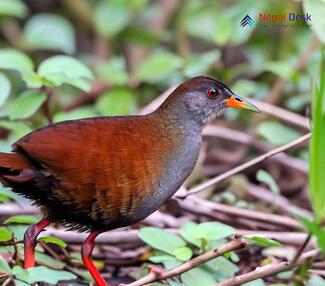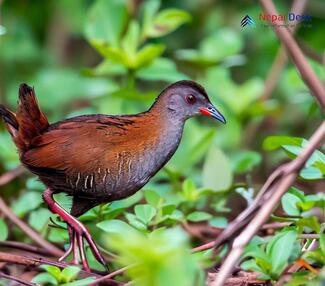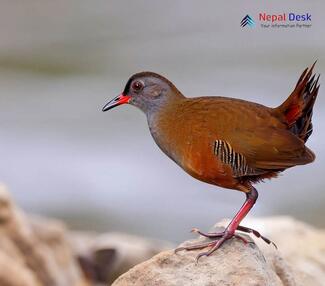Nestled within the incredible biodiversity of Nepal, one can discover a unique and captivating bird species - the Black-tailed Crake (Zapornia bicolor). Although small in size, these birds have captured the attention of bird enthusiasts and ornithologists alike due to their distinct appearance and behavior. In this blog post, we will dive into the intriguing profile of the Black-tailed Crake to better understand what makes this species so special.
Appearance and Habitat
The Black-tailed Crake makes a striking impression with its contrasting plumage. Its upper parts are characterized by olive-gray coloration, accompanied by sharp white streaks. The underparts are dominated by a chestnut hue, while the black tail and white under-tail coverts create a striking contrast. Males and females have similar appearances, although females exhibit slightly duller coloration.
Found predominantly in northeast India, Bhutan, Bangladesh, Myanmar, and Nepal, the Black-tailed Crake favors densely vegetated areas near water sources such as marshes, swamps, and wetlands. This elusive bird thrives within its natural habitat and has adapted perfectly to living in these wet environments.
Behavior and Diet
A crepuscular species, the Black-tailed Crake is most active during dawn or dusk hours. During their active hours, they forage for food among vegetation near water bodies. Their diet consists primarily of insects and aquatic invertebrates but may include seeds or small fruits when available.
Breeding pairs of Black-tailed Crakes are highly territorial, often defending their breeding sites from potential intruders. During the breeding season between April to July, their monogamous nature is complemented by duet calls made up of trills, chirps, and taps that serve to strengthen their bond.
Conservation Status
Presently, the International Union for Conservation of Nature (IUCN) classifies the Black-tailed Crake as a species of Least Concern, given its widespread distribution and stable population trend. While habitat loss and fragmentation could threaten the species in the future, ongoing conservation efforts in Nepal and across its range help to safeguard the Black-tailed Crake and its natural habitat.
Conclusion
The Black-tailed Crake serves as an intriguing example of avian biodiversity in Nepal. Their unique plumage and behavior contribute to their enduring appeal among birdwatchers and ornithologists alike. By continuing to preserve their wetland habitats and monitor their populations, we can secure a bright future for this fascinating species and enjoy their presence for generations to come.




